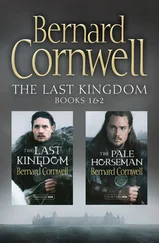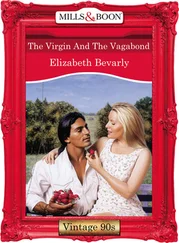The next day, Newport left the fleet riding at anchor before Paspahegh and continued in the shallop up the wider branch of the river, stopping at a point where it once again divided. There he encountered another tribe, the ‘most warlike’ Appamattuck, who came to the banks of the river and confronted the English, their leader crouched before them ‘cross-legged, with his arrow ready in his bow in one hand and taking a pipe of tobacco in the other’ uttering a ‘bold speech’. After an exchange of peaceful gestures, the English were allowed ashore, giving them an opportunity to admire the swords the Appamattuck carried on their backs, a unique weapon with a blade of wood edged with sharp stones and pieces of iron, sharp enough ‘to cleave a man in sunder’.
Having established that there was no suitable location for the settlement upstream, the shallop returned to the fleet. On 12 May, Wingfield and other members of the council took the pinnace back downriver to Archer’s Hope, to assess its viability as the best site for their settlement. A landing party found that ‘the soil was good and fruitful with excellent good timber’. They found vines as thick as a man’s thigh running up to the tops of the trees, turkey nests full of eggs, hares and squirrels in the undergrowth, birds of every hue – crimson, pale blue, yellow, green and mulberry purple – fluttering through the forest canopy. Returning to the ship, the council assembled to consider whether this should be the site for their settlement. Gosnold and Archer, perhaps with Percy’s support, argued strongly for its merits: the abundance of natural resources around, its defensible location, ‘which was sufficient with a little labour to defend ourselves against any enemy’. But Wingfield was worried about the sandbanks, which prevented shipping coming close enough to the shoreline to allow cargo and people to transfer directly on to land, a handicap that many considered the reason the Roanoke settlement had proved unsustainable. The other worry was the position of the Kecoughtans. Hakluyt had advised that the settlers should ‘in no case suffer any of the natural people of the Country to inhabit between you and the sea’.
After a heated debate, they sailed around the Isle of Hogs to look at an alternative site. It had been brought to the settlers’ attention by the Paspahegh, who claimed it to be part of their territory. It was a promontory sticking into the river, creating a constriction that forced the deep-water channel right up to the shore. In a daring test of its suitability, one of the ships was sailed up to the river bank, close enough to be tethered to the trees.
The settlers disembarked and investigated the area. They were standing on a peninsula which dangled like a piece of fruit from the mainland, its stalk a thin causeway across an otherwise impassable swamp. They also noted that the shoreline used to moor the pinnace was shielded by woods from enemy vessels coming upstream. It had once been inhabited by Indians, and some evidence may have survived of their presence, but they were long gone.
The site presented difficulties. The river and surrounding creeks and streams were brackish, so a well would have to be dug, or fresh water supplies brought in by ship. The site was also covered with large trees and thick vines which would take considerable effort to clear. There was also the issue of the Kecoughtans controlling land access to the bay.
After further arguments, during which Gosnold repeated some of his objections, the fateful decision was taken to make this the site of their settlement. As tools and supplies were unloaded from the ships, the council now gathered to constitute itself. More arguments erupted over whether Smith and even Archer should be co-opted, but in the end it was decided they should be excluded. Each council member then took the oath of allegiance, and elected Wingfield their president.
‘Now falleth every man to work,’ as Smith later put it, labourers to clearing the ‘thick grove of trees’ covering the western end of the site, soldiers to scouting the mainland, farmworkers to tilling soil and planting seeds, and President Wingfield to tending the breeding flock of thirty-seven chickens he had brought from London.
Conditions were tough. Most of the settlers slept under trees. Those who could afford to bring one enjoyed the comforts of a tent. The elderly Wingfield benefited from this and other indulgences, including the ‘divers fruit, conserves, and preserves’ he had packed into his trunk, though he later claimed that some had been pilfered. 11
For spiritual sustenance, the settlers erected a makeshift chapel out of an ‘awning (which is an old sail)’ hung between the trunks of ‘three or four trees to shadow us from the Sun’. ‘Our walls were rails of wood, our seats unhewed trees, till we cut planks, our Pulpit a bar of wood nailed to two neighbouring trees,’ Smith recalled, and ‘in foul weather we shifted into an old rotten tent, for we had few better.’ 12 In honour of their King, the council dutifully called this ramshackle collection of tents pitched on a sweaty island in the middle of a teeming forest ‘Jamestown’.
The activity on the island attracted the attention of the Paspahegh people, who visited the site on several occasions to see what was going on. To prevent causing offence, Wingfield banned the building of any permanent defensive structures and the performance of military exercises. This was in line with Hakluyt’s instructions, which urged the settlers to develop trading relations with the Indians ‘before they perceive you mean to plant among them’. Smith, however, had different ideas.
It is unclear whether Smith had yet been released from his shackles, but he was still excluded from the council’s deliberations, and he railed at Wingfield’s decision, claiming it was motivated by ‘jealousy’, his possessiveness of power. According to the Charter, the King had accepted the patentees’ request to settle Virginia principally so that they ‘may in time bring the infidels and savages living in those parts to humane civility and to a settled and quiet government’. This for Smith was royal absolution for a great civilizing mission, which should begin as it was supposed to proceed. 13
For the time being, Wingfield’s low-key policy prevailed, though Kendall, who it now transpired had some experience of military engineering in the Low Countries, managed to erect one bulwark, ingeniously constructed out of ‘the boughs of trees cast together’, possibly towards the isthmus joining the island to the mainland.
On 18 May, the Paspahegh chief himself paid a regal visit to the island with a hundred of his warriors, who ‘guarded him in a very warlike manner with bows and arrows’. The chief asked the English to lay down their arms, which they refused to do. ‘He, seeing he could not have convenient time to work his will, at length made signs that he would give us as much land as we would desire to take,’ Percy claimed. Whether or not it had been properly understood, the chief’s gesture relieved the tension, and the English put away their weapons. Then a fracas erupted between one of the English soldiers and an Indian, apparently over a stolen hatchet. One struck the other, and soon bystanders were joining in, provoking the nervous English to ‘take to our arms’. In response, the chief left ‘in great anger’, followed by his retinue.
Two days later, forty of the Paspahegh arrived with a deer carcass, apparently a peace offering. At the invitation of one of the English soldiers, they also put on an impressive demonstration of their shooting skills. The soldier propped a ‘target’ or shield ‘which he trusted in’ up against a tree, and gestured to the Indian to take a shot at it with his bow and arrow. To the soldiers’ astonishment, the arrow penetrated the shield ‘a foot through or better, which was strange, being that a pistol could not pierce it’.
Читать дальше












